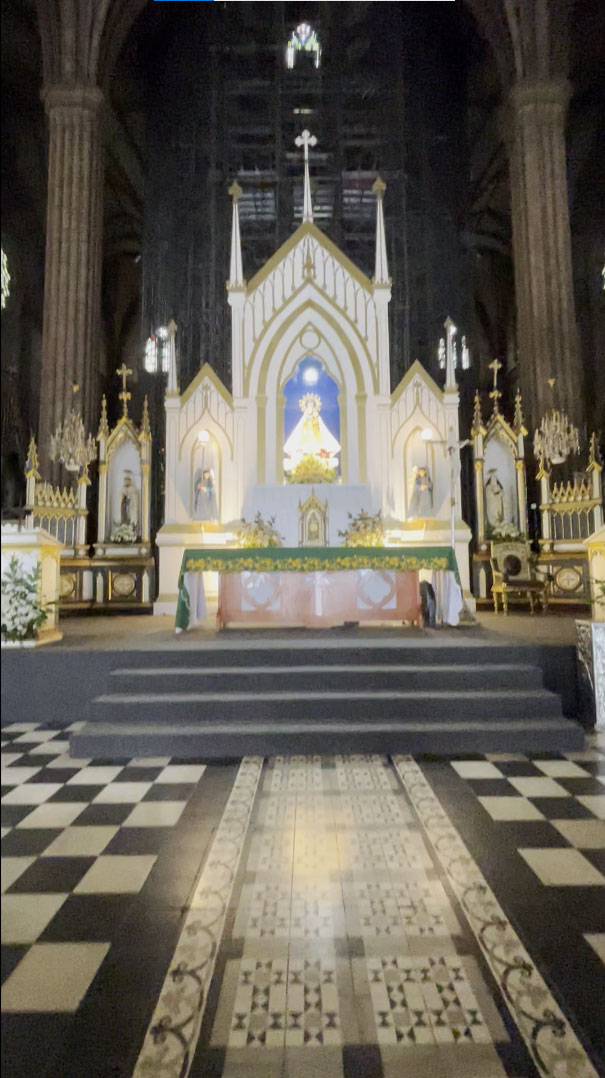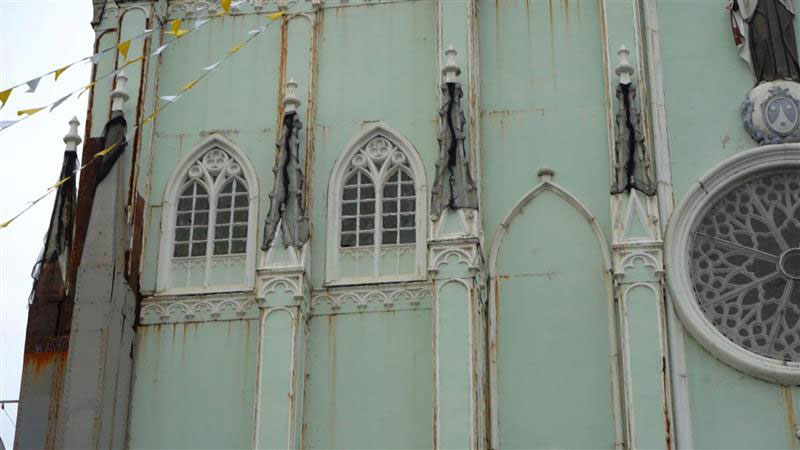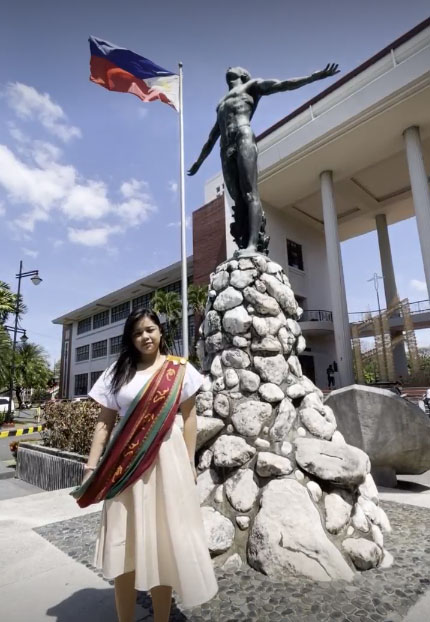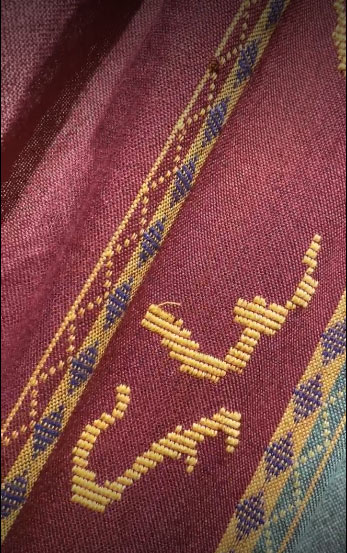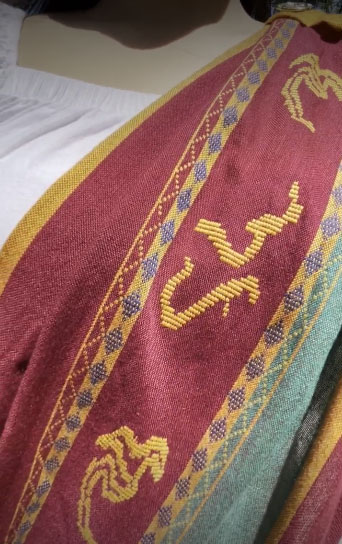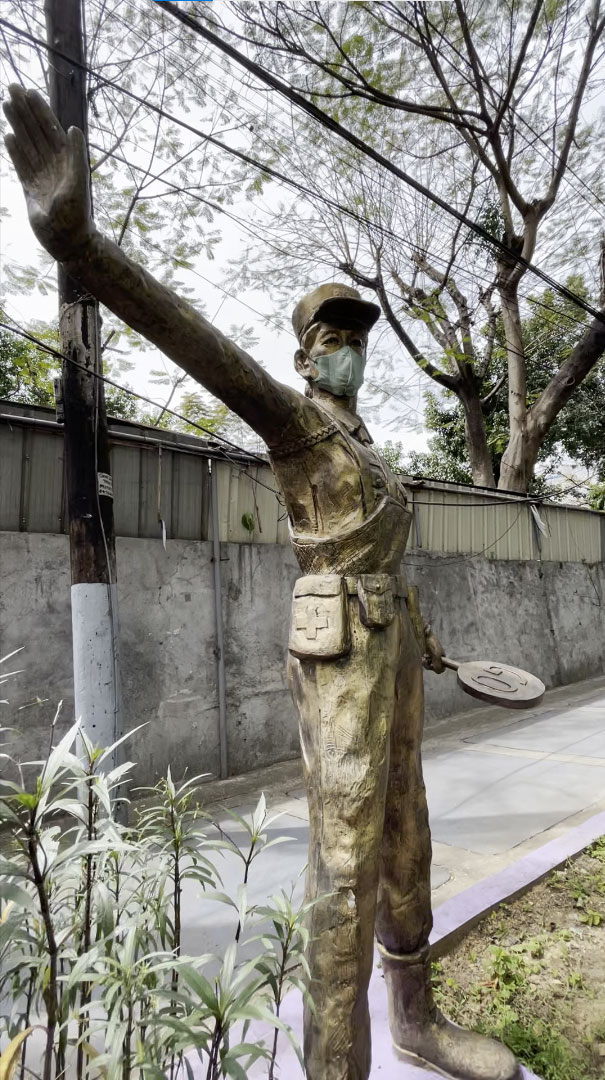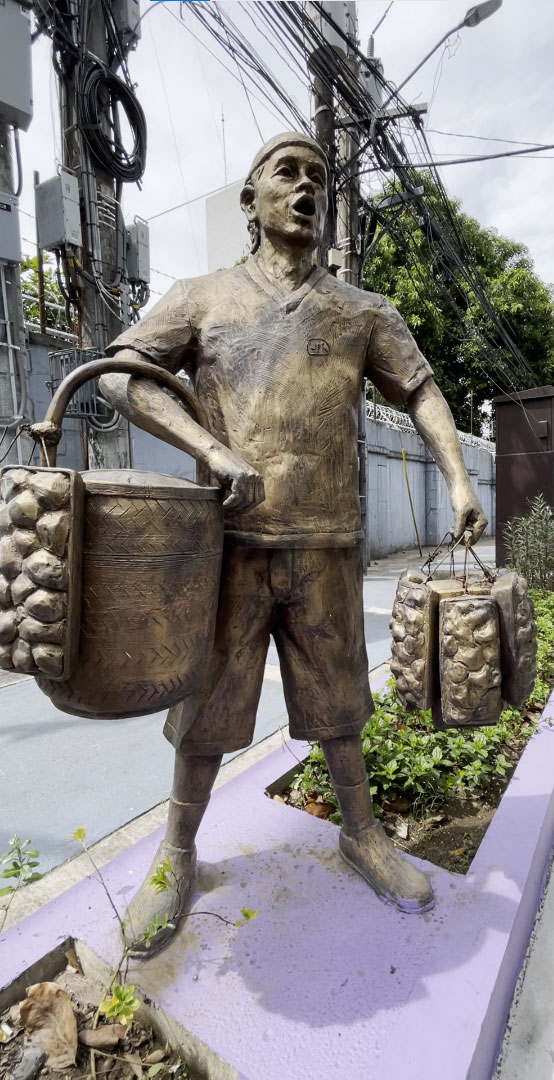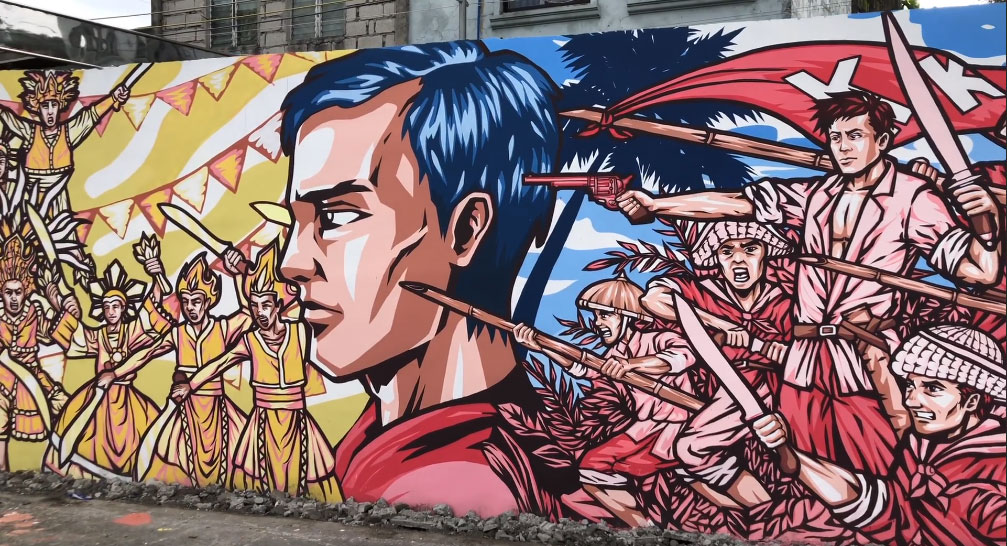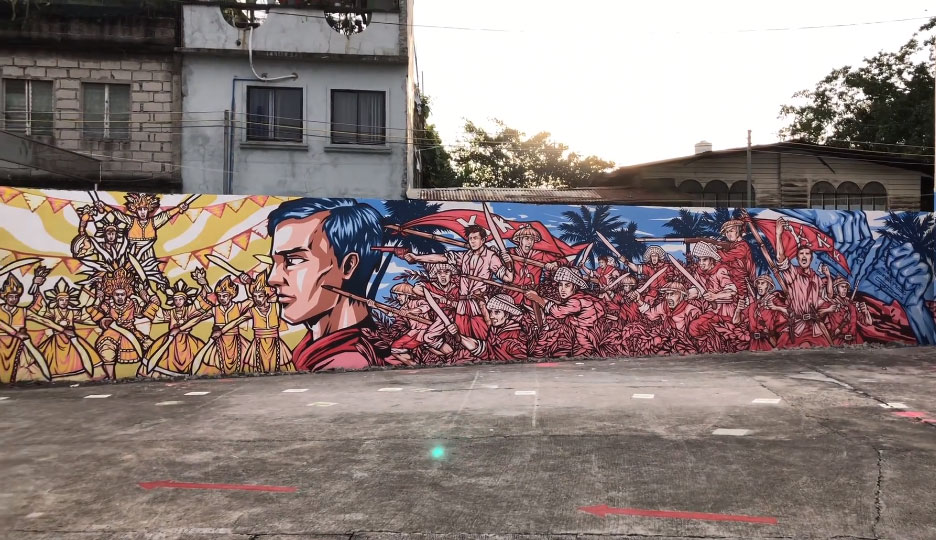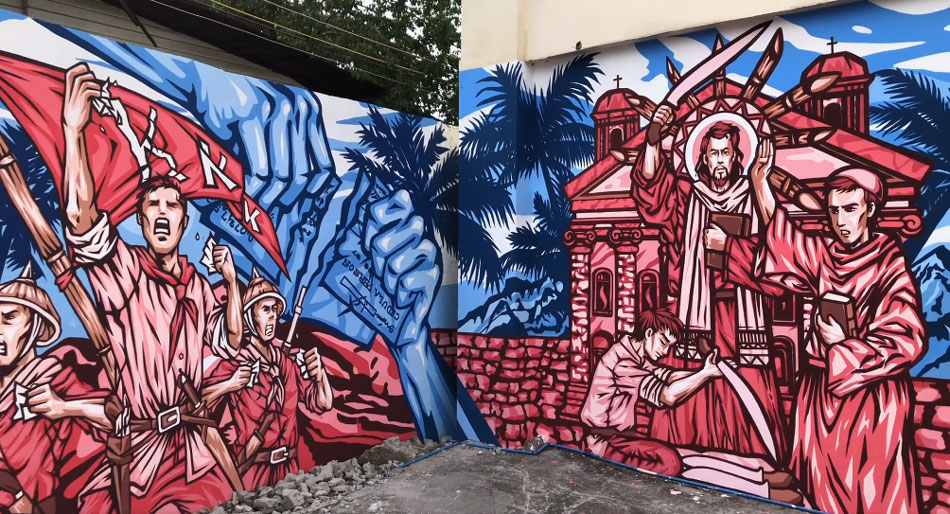LOOK: 4 artworks in PH to celebrate National Arts Month | ABS-CBN
ADVERTISEMENT

Welcome, Kapamilya! We use cookies to improve your browsing experience. Continuing to use this site means you agree to our use of cookies. Tell me more!
LOOK: 4 artworks in PH to celebrate National Arts Month
Christina Quiambao and Nina Angela Mikaela Cruz,
ABS-CBN News
Published Feb 17, 2023 02:59 PM PHT
|
Updated Feb 17, 2023 03:07 PM PHT
Want to celebrate this year’s National Arts Month? Check out these works of art in the Philippines and learn about the history behind them.
Want to celebrate this year’s National Arts Month? Check out these works of art in the Philippines and learn about the history behind them.
San Sebastian Basilica
Mightily standing in Pasaje del Carmen St. in Quiapo, Manila is the San Sebastian Basilica, which was built in 1891 with more than 1,500 tons of metal from Belgium.
Mightily standing in Pasaje del Carmen St. in Quiapo, Manila is the San Sebastian Basilica, which was built in 1891 with more than 1,500 tons of metal from Belgium.
The only all-steel church in the Philippines was designed and built to withstand earthquakes and fires that destroyed the churches preceding it.
The only all-steel church in the Philippines was designed and built to withstand earthquakes and fires that destroyed the churches preceding it.
Don Genaro Palacios is credited for the design of this church that represents a Neo-Gothic architectural style.
Don Genaro Palacios is credited for the design of this church that represents a Neo-Gothic architectural style.
ADVERTISEMENT
It also houses a replica of the original image of Our Lady of Mount Carmel that arrived in the Philippines more than 400 years ago.
It also houses a replica of the original image of Our Lady of Mount Carmel that arrived in the Philippines more than 400 years ago.
San Sebastian Basilica was declared a National Historical Landmark in 1973 and a National Cultural Treasure in 2011.
San Sebastian Basilica was declared a National Historical Landmark in 1973 and a National Cultural Treasure in 2011.
Over time, because of its exposure to elements, some areas of the structure started to show signs of corrosion. There is an ongoing campaign to #SaveSanSebastian for the restoration of its structure.
Over time, because of its exposure to elements, some areas of the structure started to show signs of corrosion. There is an ongoing campaign to #SaveSanSebastian for the restoration of its structure.
UP Sablay
Ever wondered why graduates from the University of the Philippines wear a sash instead of a toga during their commencement exercises? That’s because in 2000, the university recognized the Sablay as its official academic costume.
Ever wondered why graduates from the University of the Philippines wear a sash instead of a toga during their commencement exercises? That’s because in 2000, the university recognized the Sablay as its official academic costume.
According to the university’s website, the green and maroon represent the university’s official colors while the yellow-gold symbolizes high standards of values and excellence.
The Sablay also features the university’s initials ‘U’ and ‘P’ which are equivalent to indigenous letters originating from the indigenous alphabet called ‘Baybayin’ or ‘Katitikan.’
According to the university’s website, the green and maroon represent the university’s official colors while the yellow-gold symbolizes high standards of values and excellence.
The Sablay also features the university’s initials ‘U’ and ‘P’ which are equivalent to indigenous letters originating from the indigenous alphabet called ‘Baybayin’ or ‘Katitikan.’
ADVERTISEMENT
The curvilinear design called ‘Ukkil’ or ‘Ukit,’ resembles a sprouting plant, signifying growth of knowledge. The geometric designs are common design elements on the attires and functional objects of indigenous peoples from Batanes to Tawi-Tawi.
The curvilinear design called ‘Ukkil’ or ‘Ukit,’ resembles a sprouting plant, signifying growth of knowledge. The geometric designs are common design elements on the attires and functional objects of indigenous peoples from Batanes to Tawi-Tawi.
The inspiration for the Sablay’s form comes from the "malong” of Mindanao, usually worn around the waist but can be reconfigured to become a sash for the chest.
The inspiration for the Sablay’s form comes from the "malong” of Mindanao, usually worn around the waist but can be reconfigured to become a sash for the chest.
According to Sablay weavers from Arevalo, Iloilo, such design requires skill to make -- needing a rhythmic movement of their entire body as they work on the fabric.
According to Sablay weavers from Arevalo, Iloilo, such design requires skill to make -- needing a rhythmic movement of their entire body as they work on the fabric.
Gora Lane Sculpture Installation
These bronze sculptures scattered along the Gora Lane in Quezon City are not your usual statues; They do not depict famous people but rather represent ordinary citizens.
These bronze sculptures scattered along the Gora Lane in Quezon City are not your usual statues; They do not depict famous people but rather represent ordinary citizens.
There are 20 sculptures located along the streets of Dona Hemady, Scout Tobias, and Mother Ignacia. They were installed early 2021.
There are 20 sculptures located along the streets of Dona Hemady, Scout Tobias, and Mother Ignacia. They were installed early 2021.
ADVERTISEMENT
The Artalyer Center for Artistic and Cultural Community Development, Inc, a fine arts and decorative arts workshop studio, was commissioned for this project by the Quezon City government.
The Artalyer Center for Artistic and Cultural Community Development, Inc, a fine arts and decorative arts workshop studio, was commissioned for this project by the Quezon City government.
According to Artalyer's art director Reizel Vibal and sculptor Paul Albert Quiaño, three lead sculptors and six assistant artists worked on the artworks. It took them one and a half months to finish.
According to Artalyer's art director Reizel Vibal and sculptor Paul Albert Quiaño, three lead sculptors and six assistant artists worked on the artworks. It took them one and a half months to finish.
They used cold-cast bronze, a composite of resin and fiberglass materials using real bronze dust as the core medium.
They used cold-cast bronze, a composite of resin and fiberglass materials using real bronze dust as the core medium.
With the sculptures depicting a traffic enforcer, a magbabalut, and a magtataho, among others, the public were “astonished” because the “statues were realistically (closer to life) done, which made them more relatable,” said Vibal and Quiaño.
With the sculptures depicting a traffic enforcer, a magbabalut, and a magtataho, among others, the public were “astonished” because the “statues were realistically (closer to life) done, which made them more relatable,” said Vibal and Quiaño.
Malabon Mural
This eye-catching mural located outside an elementary school in Malabon was created in 2022 by Filipino artists from Mural Art PH in collaboration with the National Commission for Culture and the Arts.
Jerome Cuison, Mural Art PH head artist, says this mural features the preparation of Filipinos for the revolution against the Spaniards. Beyond this, it also highlights the contribution of the San Bartolome Church in Malabon before the attack.
This eye-catching mural located outside an elementary school in Malabon was created in 2022 by Filipino artists from Mural Art PH in collaboration with the National Commission for Culture and the Arts.
Jerome Cuison, Mural Art PH head artist, says this mural features the preparation of Filipinos for the revolution against the Spaniards. Beyond this, it also highlights the contribution of the San Bartolome Church in Malabon before the attack.
ADVERTISEMENT
The artists wanted to show the significance of the revolutionaries’ use of the “bolo” and “itak” as weapons against the enemy, preparing the attack during the feast of San Bartolome in Malabon, Cuison explained, as San Bartolome is the patron saint of knife makers.
The artists wanted to show the significance of the revolutionaries’ use of the “bolo” and “itak” as weapons against the enemy, preparing the attack during the feast of San Bartolome in Malabon, Cuison explained, as San Bartolome is the patron saint of knife makers.
The comic-book art style is attributed to the artists’ wish for students of the elementary school to enjoy the mural. Its colors were inspired from the Philippine flag as it dawns on red, blue, white, and yellow.
The comic-book art style is attributed to the artists’ wish for students of the elementary school to enjoy the mural. Its colors were inspired from the Philippine flag as it dawns on red, blue, white, and yellow.
One hidden detail that the artists incorporated was the tearing of the cedula, a historic moment for all Filipinos during the Spanish colonization. Another detail was the blessing the knives to be used by the revolutionists before battle.
One hidden detail that the artists incorporated was the tearing of the cedula, a historic moment for all Filipinos during the Spanish colonization. Another detail was the blessing the knives to be used by the revolutionists before battle.
“It’s important to celebrate [the National] Arts Month to promote the outstanding creation of artists all over the world,” Cuison said.
“It’s important to celebrate [the National] Arts Month to promote the outstanding creation of artists all over the world,” Cuison said.
Here are the artists who worked on the mural:
Jerome Cuison
Gleam Gepaya
Charlie Sulayao
Caira Clair De Guzman
Dianne Joy Bartonado
Here are the artists who worked on the mural:
Jerome Cuison
Gleam Gepaya
Charlie Sulayao
Caira Clair De Guzman
Dianne Joy Bartonado
The National Arts Month in the Philippines is celebrated during the month of February.
Read More:
National Arts Month
Arts
Celebration
San Sebastian Church
Baste
Church
Architecture
Malabon
Mural
Malabon Mural
ADVERTISEMENT
ADVERTISEMENT




![Stained glass art depicting Jesus carrying the cross.]](https://sa.kapamilya.com/absnews/abscbnnews/media/2023/news/02/17/san-sebastian-2.jpg)
